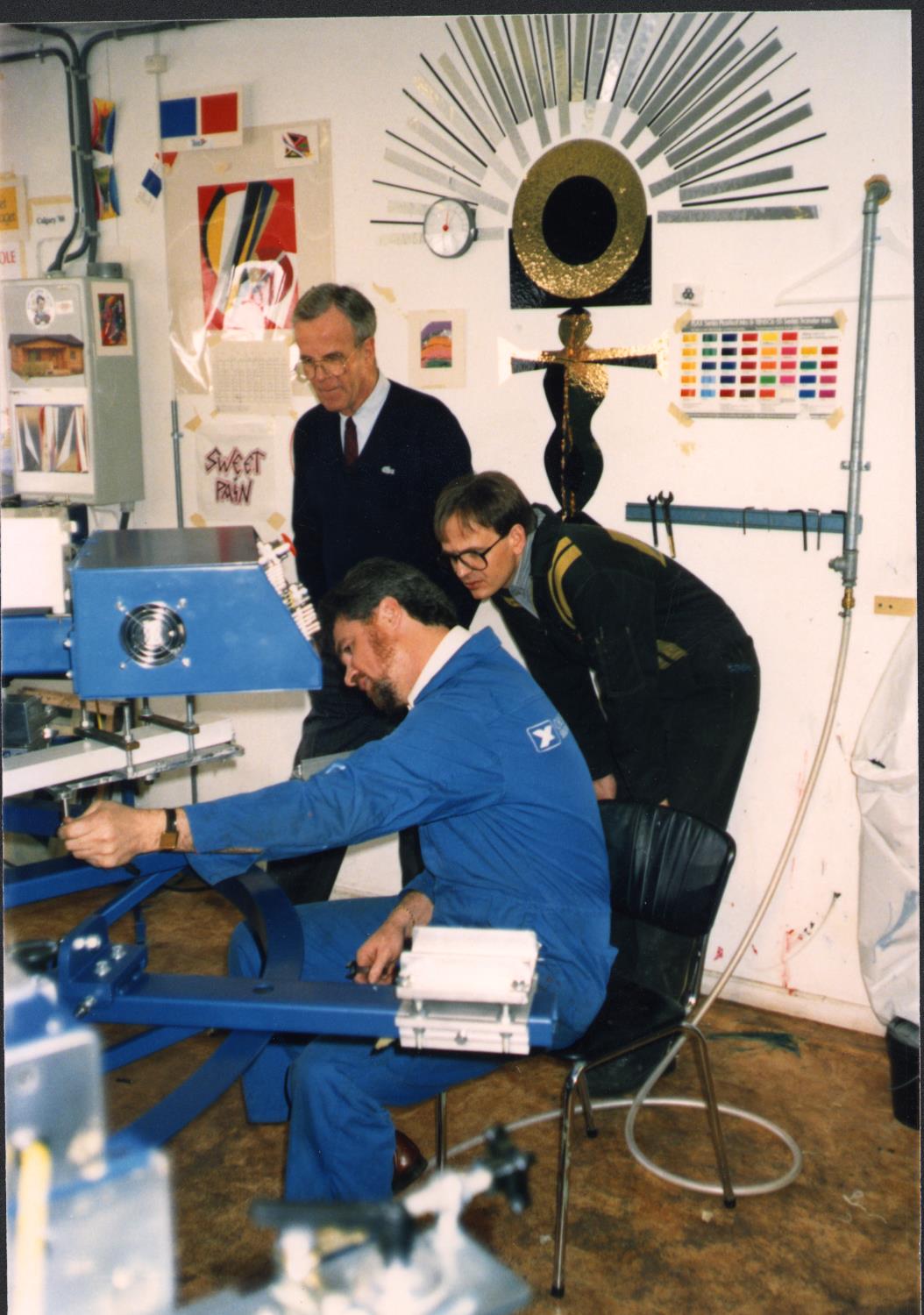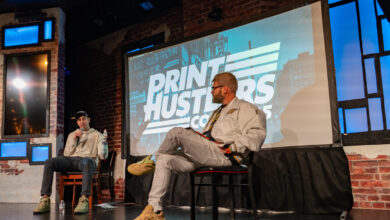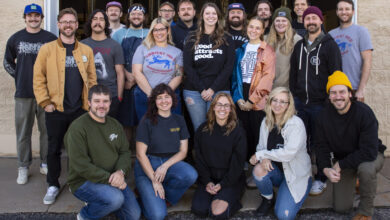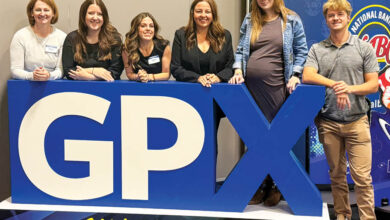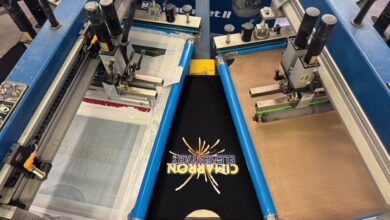EXCLUSIVE COVERAGE: Rich Hoffman Looks Back on His Time at M&R
Rich Hoffman, founder of The M&R Companies, discusses his career and upcoming retirement in this exclusive interview.
It goes without saying that the screen-printing industry has evolved largely over the last 40 years. With the advent of new machinery, digital technology, and supply chain innovation, how machines are made and how printers apply that equipment has followed suit. For Rich Hoffman, founder of The M&R Companies, he’s seen these changes firsthand both on the shop floor and in the industry at large. As he looks toward retirement this fall, Hoffman takes a few minutes to speak with Printwear on his experiences.
Humble Beginnings
Looking back to the early days of M&R’s origins, Hoffman points out that screen printing wasn’t initially part of his purview. Hoffman began his career as a certified automotive mechanic.
“I actually got into the industry May 5, 1979,” he states. “I was looking to do preventative maintenance on manufacturing equipment.”
Hoffman’s qualifications lead him to Advanced Process Supply, a screen-printing equipment supplies and ink company with a significant worldwide presence at the time. The company hired Hoffman as a building maintenance manager, and he formed a maintenance department for them. Within a year, he moved on to the service manager for the service department, overseeing the service of screen-printing equipment. While screen printing machinery was still a relatively new realm for Hoffman, he explains that it “followed suit with what my previous training was,” thanks to the mechanical and electrical components involved in manufacturing and servicing presses.
Early Days
As the 1980s ramped up, so did Hoffman’s involvement in the screen-printing press industry. In 1985, Hoffman formed the first incarnation of M&R with his partner Alexander Szyszko, (now the current president of California-based ASPE Inc.) in a 600 square-foot garage in Glen Ellyn, Illinois. With a new headquarters, Hoffman says they finished work on what would eventually be the company’s first screen-printing press.
Before moving in, Hoffman and his colleagues “did a little R&D in a two-car garage on a manual press we called the Black Max,” he says. Once they decided it was a viable product, they changed the color, re-named it the Blue Max, and moved into the Glen Ellyn facility. That shade of blue on the press became a company color going forward, Hoffman explains.
From there the company began to grow over time with trade show visits and interest from printers across the country, as well as across the globe. Hoffman marks the next step in product development for M&R as the development of the Challenger screen-printing press in 1986. The pneumatically-driven machine served as a tribute to the ill-fated space shuttle mission of the same name as well as a “challenge to the industry to compete with it,” Hoffman explains. With the Challenger in rotation, the company sold three machines that year; one to Colorado, one to the West coast, and one to Norway. From there, M&R headed toward new heights.
Big Changes
While the company continued to grow in prominence, Hoffman said he still had designs on developing a small, low-cost automatic press. That concept evolved into the six-color, eight-station Gauntlet press. The company added this new press to its show arsenal and brought the machine to the trade show floor in 1987. That marked a step in a whole new direction, Hoffman says.
“At that show, we wrote an order for 53 automatic (presses), and we had 27 employees,” says Hoffman. Orders included a healthy mix of both domestic and international buyers, setting the stage for more expansion.
More Growth, More Acquisitions
As the 1980s came to a close, M&R continued on a steady trajectory through the 1990s and into the 2000s with a set of acquisitions, as well as physical growth and product developments. Acquiring companies such as NuArc and Precision Screen Machines, M&R expanded its reach in the screen-printing equipment market as well as graphics and screen making. In 1991 things came full circle when the company acquired CS America. The Chicago-based graphics equipment company was run by the original owner of Hoffman’s early employer, Advanced Process Supply. That move, Hoffman says, shifted M&R’s focus into a marketplace of 40 percent graphics and 60 percent textiles. Since then, Hoffman says M&R’s market has shifted to 80 percent textile and 20 percent graphics.
With the constant shifting in markets and acquisitions, the company’s headquarters continued to grow over the years. “When we first moved to Glen Ellyn, we moved at least 15 times within the same facility as we took over section-by-section of the building until we acquired it and added an additional building in the back,” Hoffman explains. With acquisitions like NuArc, the company added more floor space from the acquired company’s buildings. For the international market, M&R established a mirror version of the Glen Ellyn headquarters in Poland. Hoffman explains that the location is very much like the American hub, differing mostly just in the fact that it uses metric measurements. The facility, which serves Europe, the Middle East, and Asia, improves the company’s lead times with overseas buyers.
More recently, a consolidation in 2015 shifted M&R’s U.S operations into one central building. Boasting 320,000 square feet of space, the Roselle, Illinois facility combined the Glen Ellyn and Niles, Illinois operations under one roof.
Up with People
Looking back over the years, Hoffman stresses that one of the most prominent parts of M&R’s growth is the workforce.
“If you look at the average tenure of people (working) here, it’s roughly 26 years,” Hoffman says. “We’re a well-established, well-run company that has a very loyal following of employees.”
Today, M&R’s roster includes roughly 500 employees worldwide, including manufacturing, sales, customer service, and a fleet of field technicians.
Outside of the company, Hoffman points to M&R’s extensive distributor network as a part of the organization’s continuing growth. Many of these companies, Hoffman says, grew along with M&R. Before M&R, he points out that many distributors had limited options on who to partner with and in some instances, ran the risk of losing business to another company cornering the market.
“M&R came along as an equipment supplier to give them an option to sell without any concern for us taking their supply business,” Hoffman adds.
The Road Ahead
With the 21st century in full swing, Hoffman states that M&R will continue to develop more digital solutions for printers. Screen printing will always have a place in the decorated apparel market, but he points out that smaller, custom jobs now demand additional options.
“Digital is not going to replace screen printing, but it’s absolutely going to enhance your ability to meet your customer’s needs,” says Hoffman. “With short-runs, digital is the solution.”
Along with technological changes come significant leadership changes at the organization. In May 2018, M&R announced that industry veteran Danny Sweem would succeed Hoffman as CEO. Sweem took over the role in June 2018, and Hoffman remains onsite to finalize the transition. Hoffman and Sweem recently made the trek to M&R Poland where staff met the new CEO and discussed the potential for growth in the European market.
Hoffman’s tenure concludes this Fall, and he sees a bright future for the company as he passes the torch.
“My wife (Elizabeth Hoffman), who is my partner here and I will be retiring at the end of October,” states Hoffman. “We have all the hopes in the world that M&R continues to grow on the same trajectory that it has in the past.”
To see more images of M&R and Rich Hoffman through the years, scroll below.
For more information, visit https://www.mrprint.com.

